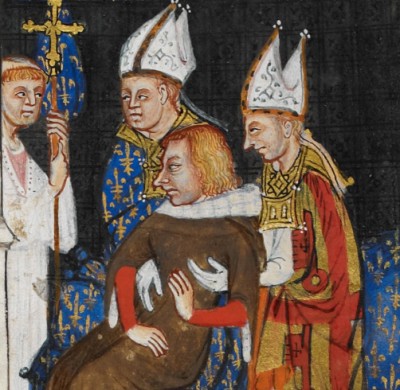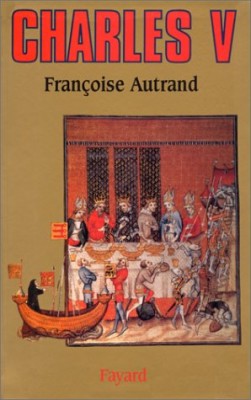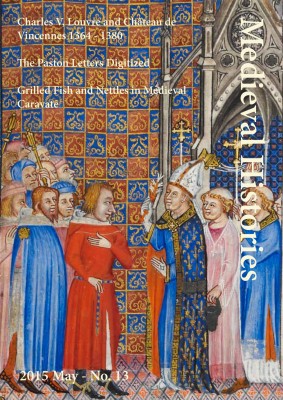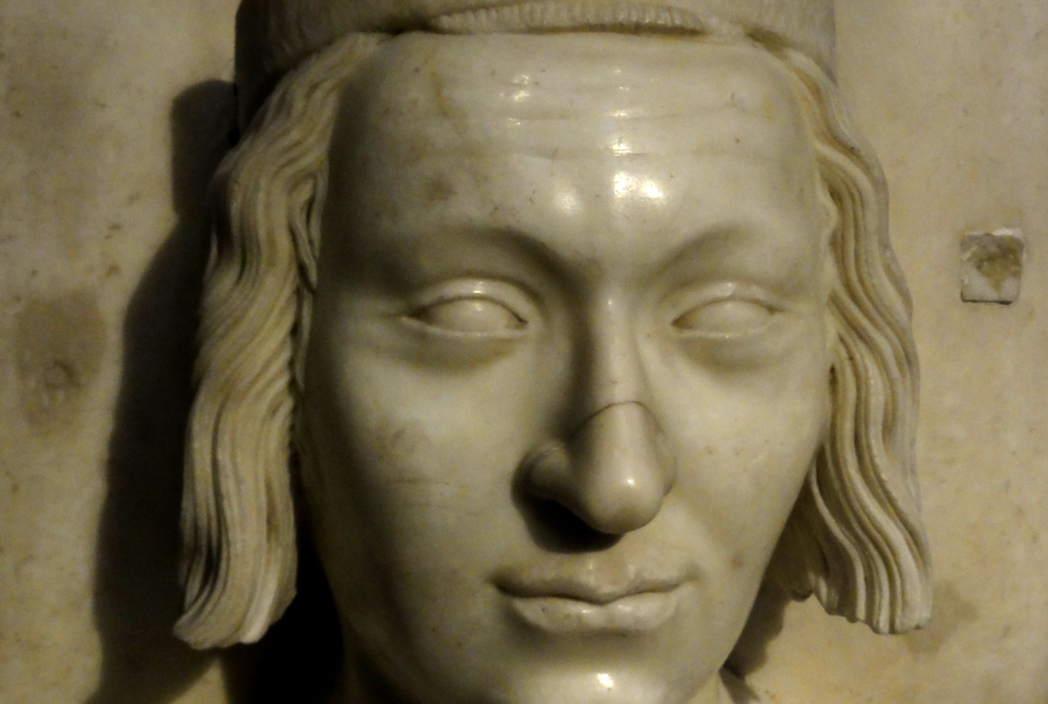Charles V was King of France during the first phase of the 100-years war and in the aftermath of the Black Death. Nevertheless, he succeeded in creating one of the first Late Medieval Courts
Charles V of the House of Valois was born in January 1338 as the eldest son of John II and Bonne de Luxembourg. He was born at a time, when the 100 years war had just broken out. Charles was the first heir to the French king, who was styled Dauphin de Viennois. In 1349 the last dauphin – dolphin – of Viennois sold his rights to the French king on condition that the designated heir to France in the future would carry this honour in his arms.
Charles had an eventful youth. Twelve years old he was married to his cousin, Jeanne de Bourbon, with whom he had eleven children. At seventeen he was already militarily engaged in connection with a rebellion by the King of Navarre, Charles the Bad, against his father.
Then in 1355 he was sworn in as regent, after the English took his father, John II, and his younger brother as prisoner at the battle of Poitiers. Before the king was captured with his immediate entourage, he had succeeded in sending the Dauphin, the future Charles V, away. The king, however, together with his youngest son was taken as prisoner to England.
Meanwhile
… all went wrong with the Kingdom, and the state was undone. Thieves and robbers rose up everywhere in the land. The nobles despised and hated all others and took no thought for the mutual usefulness and profit of lord and men. They subjected and despoiled the peasants and the men of the villages. In no way did they defend their country from enemies. Rather, they trampled it underfoot, robbing and pillaging the peasants’ goods”.[1]

The reason was the enormous ransom, the English king demanded: cessation of most of Western France and the payment of a colossal ransom of 4 million écus. Although later reduced to 3 million, it still represented a hefty sum. Charles tried to raise the sum by devaluing the currency. At the same time he summoned the Estates-General in October to seek money to bolster the defence of the country and Paris. At this parliament the third estate represented by the provost Etienne Marcel tried to get serious political concessions. Charles refused, but the provost ordered strikes and in the end Charles had to accept. However, when the news reached his father, who was – although in the royal style – living as prisoner in Bordeaux at this time, he refused to accept the agreement. Back to the drawing board, Charles began to try to take back Paris. At some point, though, he had to flee the capital and he did not return until 1359.
At the same time the English once more invaded France, with Edward reaching Rheims in December and Paris in March. This time, the defence was successful and this paved the way for renewed negotiations. In the end the king was set free. However 40 nobles including the younger son of John, Louis, were given as hostages. At some point the young man decided to flee, as France continued to have a very week economy and simply had no funds to pay the agreed sum. This induced John to return to England, perhaps to honour his agreement, perhaps to negotiate directly with Edward the III. In January 1364 he died in London.
At home Charles was finally king. His health, though, was seriously impaired, probably due to an arsenic poisoning and at the same time he lost two of his eleven children. Further, his realm was severely reduced as the English had taken over a third of France (mostly Aquitaine and Gascony). At the same time ‘routiers’, ruthless mercenary soldiers, ravaged the countryside.
Nevertheless, the new king succeeded in regaining control of both Paris and the rest of France. At the same time he began on some of the major construction works, for which he is known – Louvre and Château de Vincennes (see below)
As king, Charles benefitted from three things. First of all he had to collaborate with a reform-minded French council while being supported by a royalist alliance of Northern and Western nobles. Then, in 1369, his brother Philip the Bold succeeded in marrying the heiress of Flanders and Artois, thus denying this alliance to the English. Finally his closest ally Bertrand de Guesclin succeeded in placing a pro-French candidate on the Castilian throne. Through these political manoeuvres the English in South-Western France were caught between two hostile political powers. At the same time, Charles was able to cement a political alliance with a prominent Breton, Olivier de Clisson, who joined the camp of the French with a host of other knights.
All this fed the success of his lieutenants in the military field, where his army succeeded bit by bit in regaining former French territory. By avoiding pitched battles and instead besieging and negotiating their way forward, the English ended up with little more than a narrow coastline in Western France.
All in all, he was later considered a most wise ruler. Much of this, though, was due to the biography by Christine de Pizan, written in 1404 – Le Livre des fais et bonnes meurs du sage roy Charles V (see below). Historians have later debated whether he was in fact as politically sage as portrayed.
However there is no doubt Charles maintained the French court in an opulent and refined manner that anticipated the courts of the European Renaissance. Christine de Pisan, Charles’ biographer, paints a picture of a wise ruler whose academic tastes led him to commission and to collect some of the finest works of medieval illuminated manuscripts of his day. Eventually Charles amassed at his royal residences a library of over 900 manuscripts, of which around 100 are known to survive today. Among the most important of these manuscripts is this Coronation Book.
NOTES
[1] From the Chronicle of Jean de Venette for the year 1356. Ed. by Jean Birdsall and Richard A. Newhall
The Chronicles of Jean de Venette, Columbia University Press 1953, p. 6
READ MORE:
 Charles V, le Sage
Charles V, le Sage
By Françoise Autrand
Fayard 199
ISBN-10: 2213027692
ISBN-13: 978-2213027692
 Medieval Histories 2015, No. 13
Medieval Histories 2015, No. 13
Tells a number of stories about Charles V, His Daily life and his castles.
